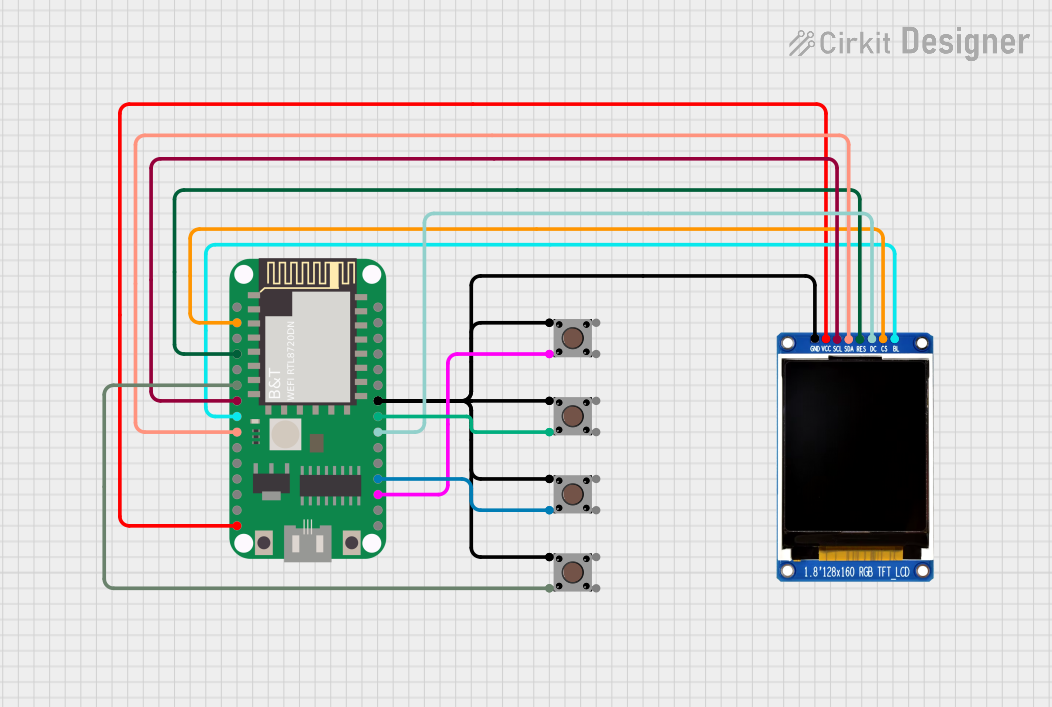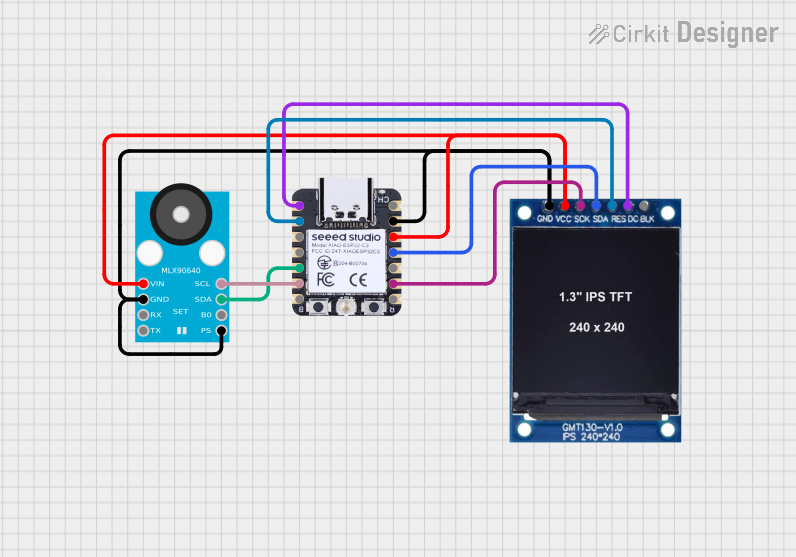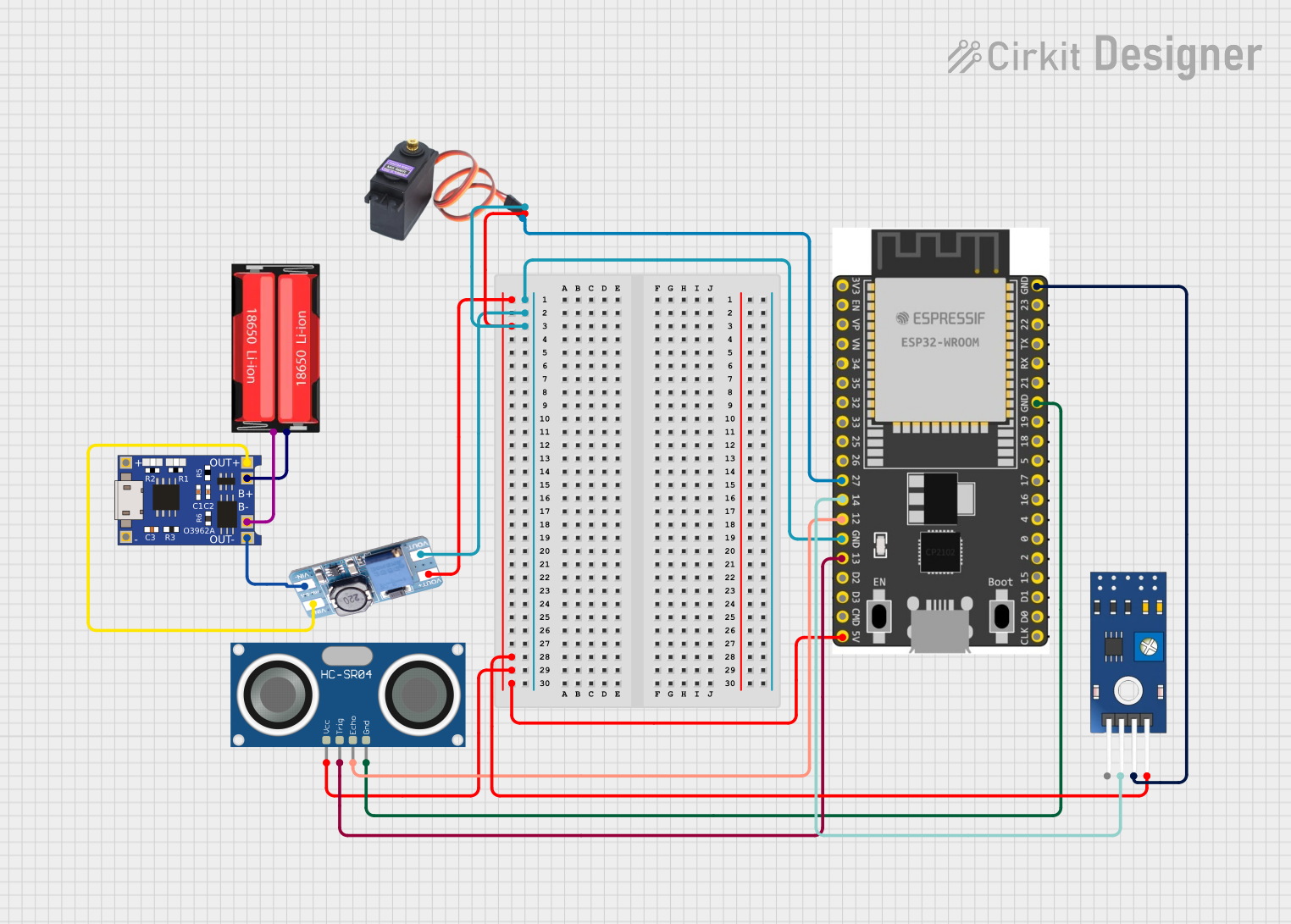
How to Use TC4420: Examples, Pinouts, and Specs

 Design with TC4420 in Cirkit Designer
Design with TC4420 in Cirkit DesignerIntroduction
The TC4420 is a high-speed CMOS buffer/driver manufactured by Microchip, designed specifically for driving capacitive loads such as MOSFET gates. It features a high output current capability of up to 6A and a low output impedance, making it ideal for applications requiring fast switching and high drive strength. The TC4420 is widely used in power electronics, motor control, and switching power supplies due to its robust performance and reliability.
Explore Projects Built with TC4420

 Open Project in Cirkit Designer
Open Project in Cirkit Designer
 Open Project in Cirkit Designer
Open Project in Cirkit Designer
 Open Project in Cirkit Designer
Open Project in Cirkit Designer
 Open Project in Cirkit Designer
Open Project in Cirkit DesignerExplore Projects Built with TC4420

 Open Project in Cirkit Designer
Open Project in Cirkit Designer
 Open Project in Cirkit Designer
Open Project in Cirkit Designer
 Open Project in Cirkit Designer
Open Project in Cirkit Designer
 Open Project in Cirkit Designer
Open Project in Cirkit DesignerCommon Applications
- Driving power MOSFETs and IGBTs in switching circuits
- Motor control and industrial automation
- DC-DC converters and power inverters
- Pulse-width modulation (PWM) circuits
- High-speed switching applications
Technical Specifications
Key Technical Details
| Parameter | Value |
|---|---|
| Supply Voltage (Vdd) | 4.5V to 18V |
| Output Current (Peak) | ±6A |
| Output Impedance | 1.4Ω (typical) |
| Propagation Delay | 25ns (typical) |
| Rise/Fall Time | 25ns (typical) |
| Operating Temperature | -40°C to +125°C |
| Input Threshold Voltage | CMOS/TTL compatible |
| Package Options | PDIP, SOIC, TO-220, and others |
Pin Configuration and Descriptions
The TC4420 is available in an 8-pin package. Below is the pinout and description:
| Pin Number | Pin Name | Description |
|---|---|---|
| 1 | GND | Ground connection for the device. |
| 2 | IN | Input signal to control the output driver. CMOS/TTL compatible. |
| 3 | NC | No connection. Leave unconnected or grounded. |
| 4 | VDD | Positive supply voltage (4.5V to 18V). |
| 5 | OUT | Output signal to drive the load (e.g., MOSFET gate). |
| 6 | NC | No connection. Leave unconnected or grounded. |
| 7 | NC | No connection. Leave unconnected or grounded. |
| 8 | GND | Ground connection for the device. |
Usage Instructions
How to Use the TC4420 in a Circuit
- Power Supply: Connect the VDD pin to a stable power supply within the range of 4.5V to 18V. Connect the GND pins to the circuit ground.
- Input Signal: Provide a CMOS/TTL-compatible input signal to the IN pin. This signal will control the output state.
- Output Connection: Connect the OUT pin to the gate of the MOSFET or other capacitive load. Ensure the load does not exceed the peak current rating of ±6A.
- Bypass Capacitor: Place a decoupling capacitor (e.g., 0.1µF ceramic) close to the VDD and GND pins to reduce noise and improve stability.
- Thermal Management: If operating at high currents, ensure proper heat dissipation using a heatsink or adequate PCB design.
Important Considerations
- Avoid exceeding the maximum supply voltage (18V) or output current (±6A) to prevent damage.
- Use short and wide PCB traces for the output connection to minimize inductance and resistance.
- Ensure the input signal is clean and free from noise to avoid erratic switching behavior.
- For high-frequency applications, consider adding a small resistor (e.g., 10Ω) in series with the output to dampen ringing.
Example: Using TC4420 with Arduino UNO
The TC4420 can be used to drive a MOSFET in a high-speed switching application. Below is an example of how to connect and control the TC4420 using an Arduino UNO:
Circuit Diagram
- Connect the Arduino digital output pin (e.g., D3) to the IN pin of the TC4420.
- Connect the OUT pin of the TC4420 to the gate of the MOSFET.
- Connect the VDD pin of the TC4420 to a 12V power supply and the GND pins to the common ground.
Arduino Code
// Example code to control the TC4420 with an Arduino UNO
// This code generates a PWM signal to drive the TC4420
const int driverPin = 3; // Pin connected to the IN pin of TC4420
void setup() {
pinMode(driverPin, OUTPUT); // Set the driver pin as an output
}
void loop() {
analogWrite(driverPin, 128); // Generate a 50% duty cycle PWM signal
delay(1000); // Wait for 1 second
analogWrite(driverPin, 255); // Generate a 100% duty cycle PWM signal
delay(1000); // Wait for 1 second
}
Troubleshooting and FAQs
Common Issues and Solutions
No Output Signal:
- Ensure the VDD pin is connected to a stable power supply within the specified range.
- Verify that the input signal is CMOS/TTL compatible and properly connected to the IN pin.
- Check for loose or incorrect connections in the circuit.
Overheating:
- Ensure the load does not exceed the maximum output current of ±6A.
- Use proper thermal management techniques, such as heatsinks or adequate PCB design.
Erratic Switching:
- Verify that the input signal is clean and free from noise.
- Add a bypass capacitor (e.g., 0.1µF) close to the VDD and GND pins to reduce noise.
Output Voltage Too Low:
- Check the supply voltage at the VDD pin.
- Ensure the load impedance is not too low, which could cause excessive current draw.
FAQs
Q1: Can the TC4420 drive an N-channel MOSFET?
A1: Yes, the TC4420 is designed to drive both N-channel and P-channel MOSFETs effectively.
Q2: What is the maximum switching frequency of the TC4420?
A2: The TC4420 can operate at frequencies up to several hundred kHz, depending on the load capacitance and supply voltage.
Q3: Can I use the TC4420 with a 3.3V logic input?
A3: No, the TC4420 requires a minimum input voltage of 4.5V. For 3.3V logic, consider using a level shifter or a compatible driver.
Q4: Is the TC4420 suitable for driving LEDs?
A4: The TC4420 is optimized for capacitive loads like MOSFET gates. For driving LEDs, a constant current driver is recommended.